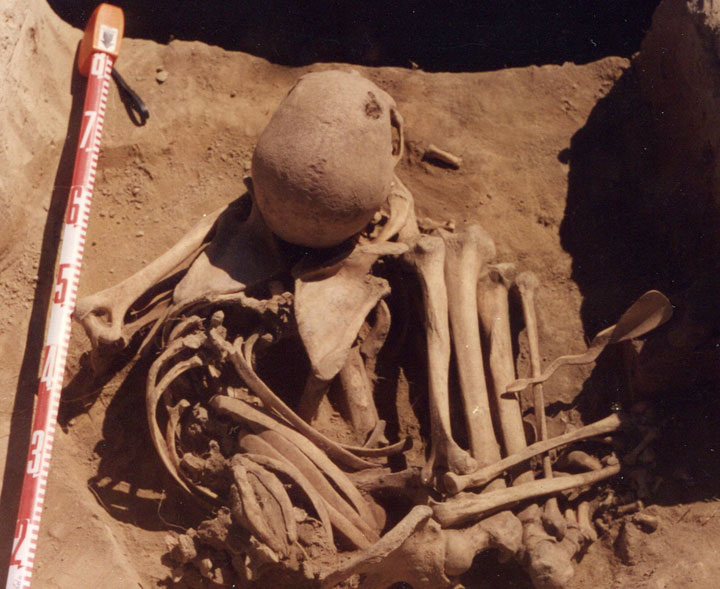SASKATOON – A group of researchers, including a Saskatchewan scientist, have found what may be the oldest case of human cancer in the world.

Bones of a man exhumed in Siberia that date back 4,500 years to the Early Bronze Age show he had lung or prostate cancer, which eventually spread through his body from his hip to his head. He died between 35 and 45 years old.
“This is one of — if not the oldest — absolute cases of cancer that we can be really, really confident saying that it’s cancer,” said Angela Lieverse, a bioarchaeologist at the University of Saskatchewan in Saskatoon.
She said there have been similar cancer discoveries in remains estimated to be 5,000 to 6,000 years old. But those involved unconfirmed cancers or tumours that were later found to be benign.
The latest study, co-authored by Daniel Temple from George Mason University in Virginia and Vladimir Bazaliiskii with Irkutsk State University in Russia, was published Wednesday in the scientific journal PLOS ONE.
READ MORE: How much do cancer drugs cost Canadians?
Lieverse said the cancer she and her partners found refutes a widely held belief that the disease is a modern phenomenon.
“We’ve had this perception that it was almost non-existent in antiquity, because people didn’t live the same kind of lifestyle that we live now. They lived in these pure, toxin-free environments and they were very active and ate natural foods,” she said.
“But it was more common than we like to think it was.”
Lieverse speculates that as well as non-environmental factors, natural carcinogens played a role in ancient cancers. The man in the study was a hunter-gatherer, who would have built wood fires to keep warm in the cool climate. He would have often inhaled smoke, which could have given him lung cancer, she suggested.
READ MORE: How healthy is your city? 7 findings about Canada’s best and worst cancer-fighting cities
The cancer then ate holes throughout the man’s bones, which were meticulously preserved and therefore easier to diagnose than typical remains.
Lieverse said as soon as she saw the skeleton in 2012, she recognized the marks left by cancer.
She had travelled to Russia as part of a project based at the University of Alberta that studied age-old hunter-gatherers in northeast Asia. But when she saw the bones of the man, her research began to focus on him.
She stayed for months documenting the remains and taking photographs.
READ MORE: Canada losing out on negotiating lower drug prices, study says
Lieverse said the man had been buried in a small cemetery in the Cis-Baikal region. He was found in a fetal position in a circular pit with an intricately carved bone spoon, unlike most men of the time who were buried lying on their backs with their fishing or hunting gear.
He must have lived a distinct life in his community, she said, but he also would have experienced a most agonizing death. Near the end, he would have been nauseous, fatigued, unable to breathe and in constant pain.
“It’s a tragic story. It breaks your heart to think of what he went through.”



Comments